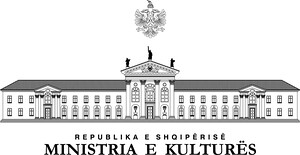In Our Home
On Neighbours and Togetherness
May 22–November 21, 2021
Arsenale Artiglierie
30122 Venice
Italy
In Our Home is the project representing Albania at the 17th International Venice Architecture Biennale. The pavilion is commissioned by the Minister of Culture of Albania, Elva Margariti, and curated by a team of four architects: Fiona Mali, Irola Andoni, Malvina Ferra and Rudina Breçani.
At the wake of this new decade, for Albania, the answer to the question “How will we will live together?” is simply: know your neighbour.
More people live next to each other than ever before—almost 60% of the world’s population lives in urban areas, but paradoxically the number of people feeling lonely is higher than ever. The COVID-19 pandemic further accentuated this phenomenon but on the other side it redirected our focus towards our homes and close living quarters—especially the spaces we share with our neighbours.
Neighbourliness is a social bond that owes its existence only to the built environment, just because our home is located next to someone else’s. 20 years ago, in Albania, neighbours were closer than relatives. People lived in open homes. They had their morning coffees together, they would lend and borrow extra chairs for special dinners, they would share their telephones or televisions, they would come together for endless hours of play and entertainment, they would trust each other with their house keys!
Today, only one generation past, neighbours barely know each other’s names. Among other factors, architecture played an important role in this transformation. The urban fabric and the built environment changed dramatically and today we find ourselves to be only customers of the housing industry. But, at the same time, we are yearning for a bond, which once fulfilled our need to belong in a community and made a place of our address. The project digs into the past to address the future, attempting to answer questions like: why is knowing our neighbours not the default? Why don’t we live in open homes anymore?
The traditional Albanian home was centered around the living room, only with a significant difference: Albanians referred to it as “the guest room.” It was almost exclusively used to share time with people who were not family members: visitors of all sorts, but almost everyday, those were neighbours. The heart and hearth of the old private house, was later brought into the modern apartment buildings, where families sacrificed a bedroom just to have a presentable space dedicated to socializing with others.
What being neighbours was like, is genuinely shown in the project through dozens of personal stories and photographs collected during the past year and old Albanian films produced during communism, the era known as the time of Kinostudio. Albeit filled with propaganda dictating the perfect socialist behavior, these fiction films never failed to depict the typical life of Albanian families, with neighbours being integral to many of their plots.
The Albanian pavilion wants to bring to attention what or who might lie beyond our apartment’s walls. It is an invitation to cross these walls and rediscover neighbourliness. The pavilion evokes the once thriving guest room, as a place of sharing that was lost between the walls of new apartments—the essence of open homes. Three such neighbouring apartments, besides sharing the obvious walls, share a space that can only come to life if the neighbours are willing to make the discovery.
The interiors of the apartments become the outside of the pavilion. The visitors will recognize at first glance they are stepping into a familiar home setting, which upon further observation hints at the typical Albanian apartment of the late 20th century. Modern abstracted furniture is flattened on penetrable walls. The visitors/(neighbours) coming from different apartments, cross the “walls” to reach the core of the experience where they witness neighbourliness first hand. Here, in our home, the visitor sees himself as part of the film sequences, he stands among neighbours being neighbours. A moment of reflection: what has become of us and our homes?








